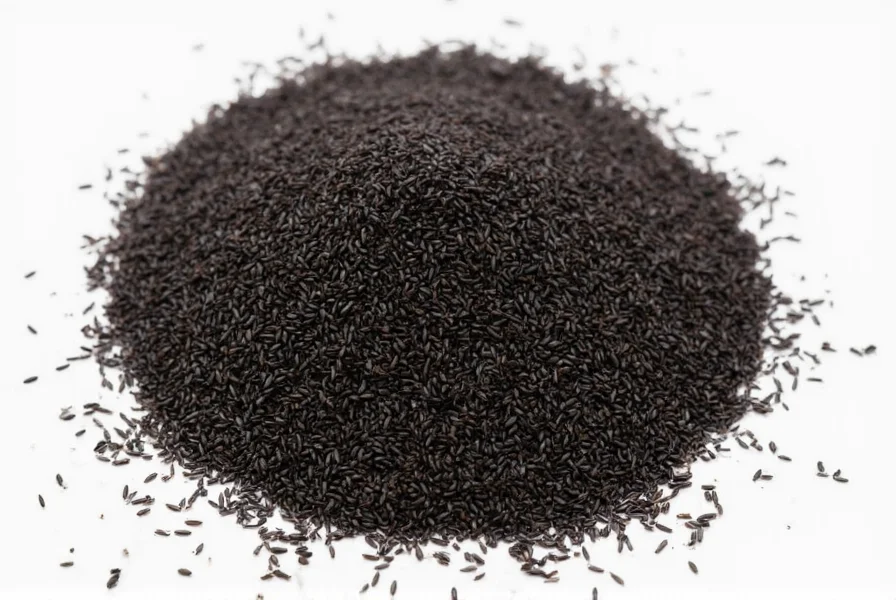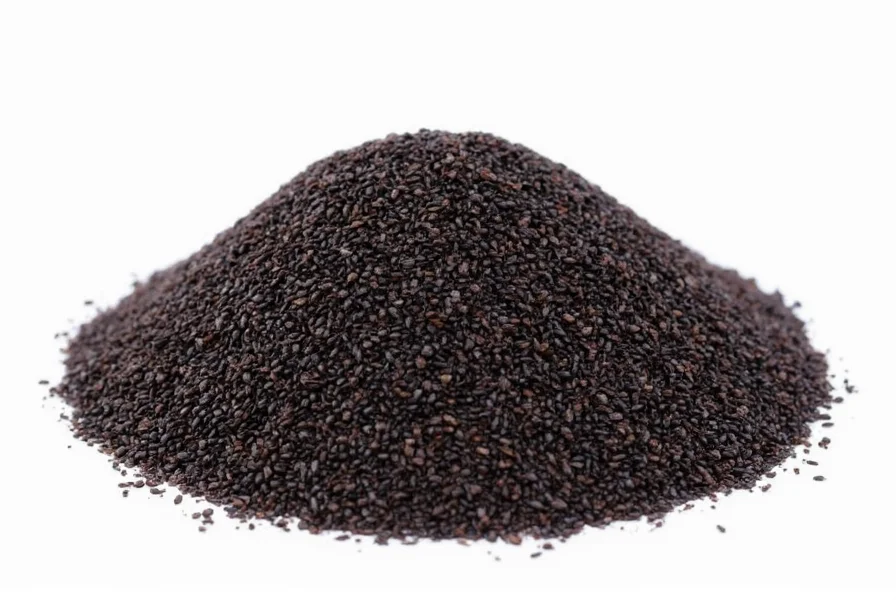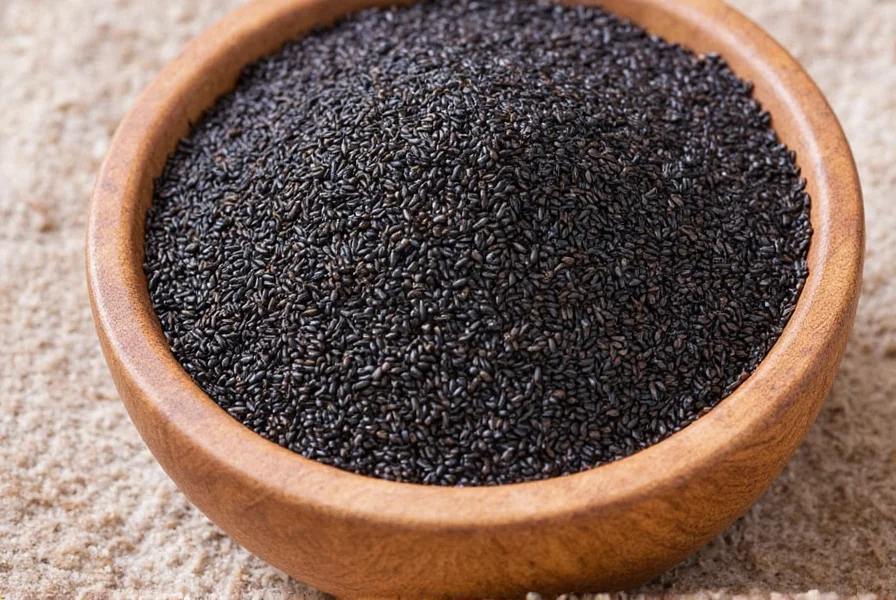When exploring what is black sesame, it's essential to understand this ancient seed's unique properties that distinguish it from its more common white counterpart. Black sesame seeds originate from the same Sesamum indicum plant but feature a completely intact seed coat that provides their characteristic dark color and enhanced nutritional profile. These seeds have played significant roles in traditional Chinese medicine and Ayurvedic practices for centuries, valued for their purported health benefits and culinary versatility.
Physical Characteristics and Composition
Black sesame seeds measure approximately 3-4 millimeters in length and maintain a smooth, oval shape with a deep black to charcoal-gray hue. Their most distinguishing feature is the intact seed coat, which white sesame seeds lose during the hulling process. This outer layer contains concentrated levels of anthocyanins and other polyphenols responsible for both the color and many health benefits.

Black Sesame vs White Sesame: Key Differences
Understanding the difference between black and white sesame seeds reveals why black varieties command premium status in many culinary traditions:
| Characteristic | Black Sesame | White Sesame |
|---|---|---|
| Seed Coat | Intact, dark-colored | Hulled, removed |
| Antioxidant Content | Significantly higher (anthocyanins) | Lower |
| Calcium Content | Approximately 975mg per 100g | Approximately 976mg per 100g |
| Flavor Profile | Stronger, nuttier, earthier | Milder, more delicate |
| Culinary Use | Traditional medicines, premium dishes | General cooking, baking |
While both varieties contain similar calcium levels, black sesame seeds contain substantially higher concentrations of antioxidants due to their intact seed coat. The anthocyanins responsible for their dark color provide potent antioxidant properties that white sesame lacks after hulling.
Nutritional Profile and Health Benefits
When researching what is black sesame seed nutritionally, scientific analysis reveals impressive components. Per 100 grams, black sesame provides approximately 573 calories, 18 grams of protein, 50 grams of fat (primarily healthy unsaturated fats), and 25 grams of dietary fiber. Most notably, they contain:
- High levels of sesamin and sesamolin (lignans with antioxidant properties)
- Significant vitamin E content (gamma-tocopherol)
- Essential minerals including calcium, iron, magnesium, and zinc
- Anthocyanins (the pigments giving black sesame its color)
Traditional medicine systems have long associated black sesame with numerous health benefits. Modern research supports several potential advantages, including improved cardiovascular health through cholesterol regulation, enhanced bone density due to calcium absorption properties, and potential anti-inflammatory effects. The seeds' high antioxidant content may also contribute to cellular protection against oxidative stress.
Culinary Applications Across Cultures
Exploring how to use black sesame in cooking reveals its global culinary significance. In East Asian cuisine, black sesame features prominently in both sweet and savory applications. Chinese chefs use it in mooncakes and as a garnish for dim sum, while Japanese cuisine incorporates it into furikake seasoning and as a key ingredient in the popular black sesame ice cream.
Korean cuisine utilizes black sesame in ddeok (rice cakes) and as a flavoring for noodles, and in Indian cooking, it appears in traditional sweets like til ladoo. The seeds can be used whole, toasted, or ground into pastes and oils. When toasting black sesame seeds, they develop a more intense nutty flavor while maintaining their striking visual contrast against lighter foods.

Storage and Preparation Tips
Proper storage maintains the quality of black sesame seeds. Store them in an airtight container in a cool, dark place for up to six months, or refrigerate for extended freshness. For maximum flavor and nutritional benefit, lightly toast the seeds in a dry pan over medium heat until fragrant (about 2-3 minutes), being careful not to burn them.
When incorporating black sesame into recipes, consider these techniques:
- Grind toasted seeds into a fine powder for baking or smoothies
- Make black sesame paste by blending toasted seeds with a small amount of oil
- Use whole seeds as a visually striking garnish for salads and rice dishes
- Create black sesame milk by blending soaked seeds with water and straining
Common Misconceptions Clarified
Several misconceptions surround black sesame. First, despite popular belief, black sesame isn't inherently higher in calcium than white sesame—the difference is negligible. Second, while often called "unhulled," black sesame seeds actually have their hulls intact, unlike white sesame which has been processed to remove the hull.
Another common misunderstanding involves the claim that black sesame promotes hair darkening or prevents graying. While the seeds contain nutrients beneficial for overall hair health, scientific evidence specifically linking them to hair color restoration remains limited. Understanding these facts helps separate evidence-based benefits from traditional claims when exploring what is black sesame in practical terms.
What exactly is black sesame and how does it differ from regular sesame?
Black sesame refers to sesame seeds (Sesamum indicum) with an intact dark-colored seed coat, unlike white sesame which has been hulled. The black variety retains its nutrient-rich outer layer, giving it higher antioxidant content, a stronger nutty flavor, and distinctive visual appearance while coming from the same plant species.
Are black sesame seeds more nutritious than white sesame seeds?
Yes, black sesame seeds generally contain higher levels of antioxidants, particularly anthocyanins found in the seed coat. While both varieties have similar calcium and fat content, black sesame provides additional polyphenols due to its intact outer layer, which is removed during the hulling process for white sesame.
How can I incorporate black sesame into my daily diet?
You can add black sesame to your diet by sprinkling toasted seeds on salads or rice dishes, blending them into smoothies, making black sesame paste for baking, creating black sesame milk, or using them in traditional recipes like mooncakes or rice cakes. Lightly toasting enhances their nutty flavor before use.
Does black sesame really help with hair health as traditionally claimed?
Black sesame contains nutrients beneficial for overall hair health, including zinc, iron, and healthy fats. While traditional medicine systems associate it with hair benefits, scientific evidence specifically linking black sesame to hair darkening or preventing graying remains limited. It contributes to general nutritional support for hair but shouldn't be considered a specific treatment for hair color changes.
How should I store black sesame seeds to maintain freshness?
Store black sesame seeds in an airtight container in a cool, dark place for up to six months. For longer storage (up to one year), keep them in the refrigerator. Avoid exposure to heat, light, and moisture which can cause the oils in the seeds to become rancid. Lightly toasting before use enhances their flavor and aroma.
Conclusion
Understanding what black sesame is reveals a remarkable seed with deep historical roots and impressive nutritional properties. From its distinctive appearance to its rich flavor profile and potential health benefits, black sesame offers culinary enthusiasts and health-conscious consumers a valuable ingredient worth exploring. Whether used as a garnish, ground into paste, or incorporated into traditional recipes, this ancient seed continues to earn its place in modern kitchens worldwide while maintaining its cultural significance across numerous traditions.











 浙公网安备
33010002000092号
浙公网安备
33010002000092号 浙B2-20120091-4
浙B2-20120091-4